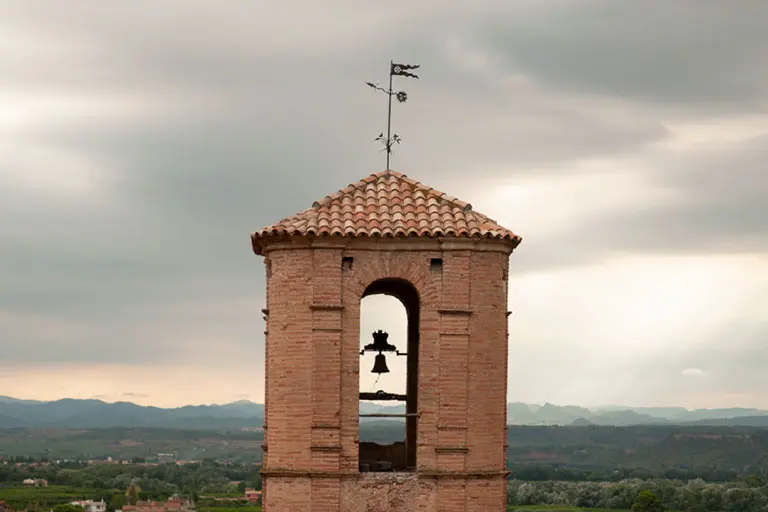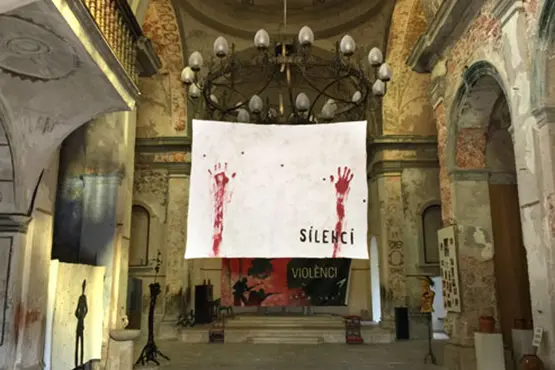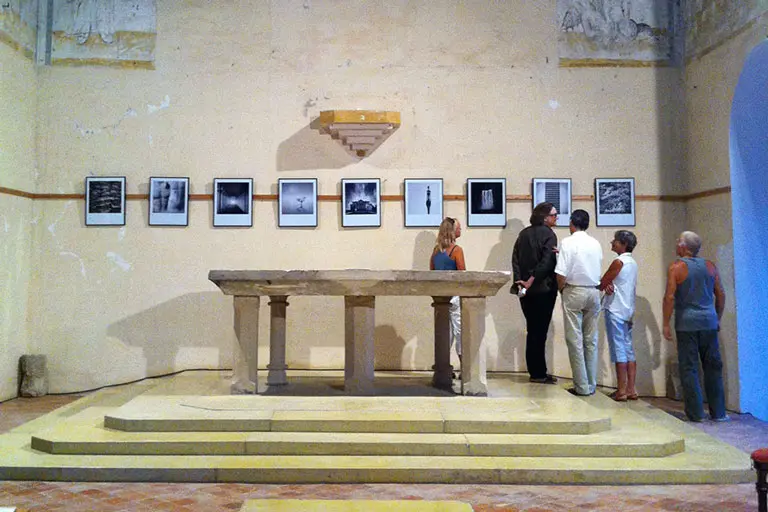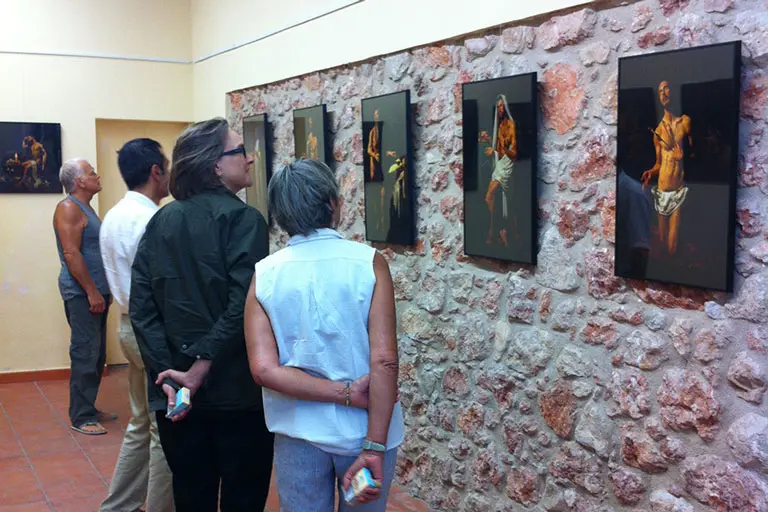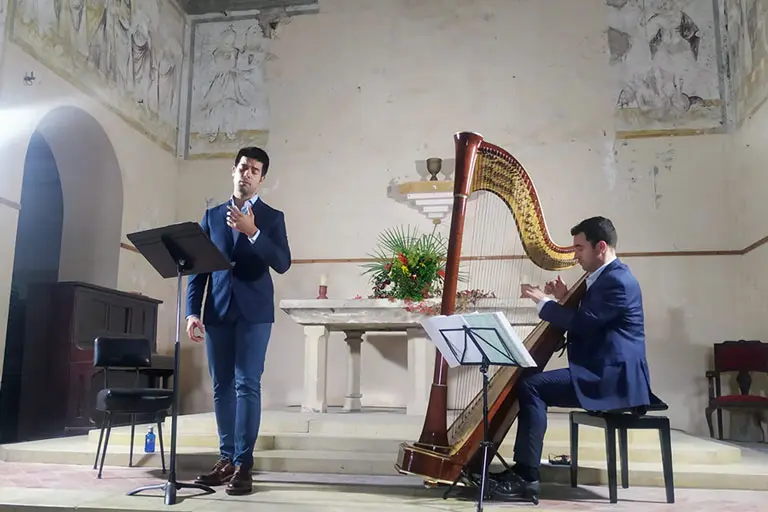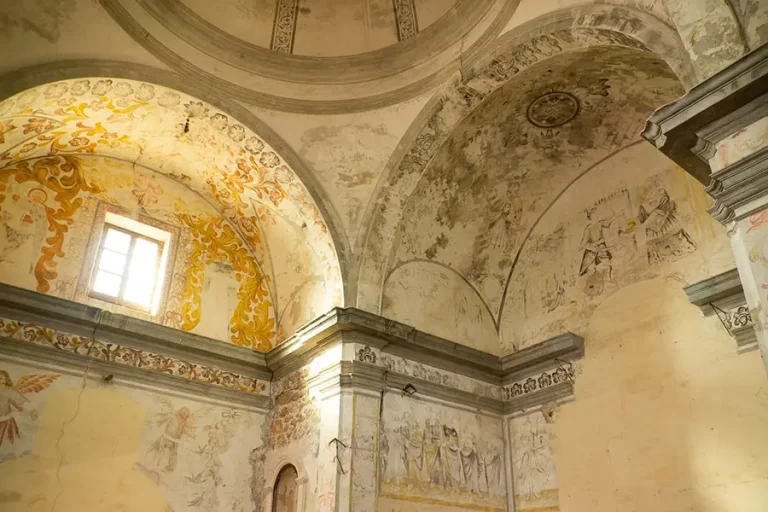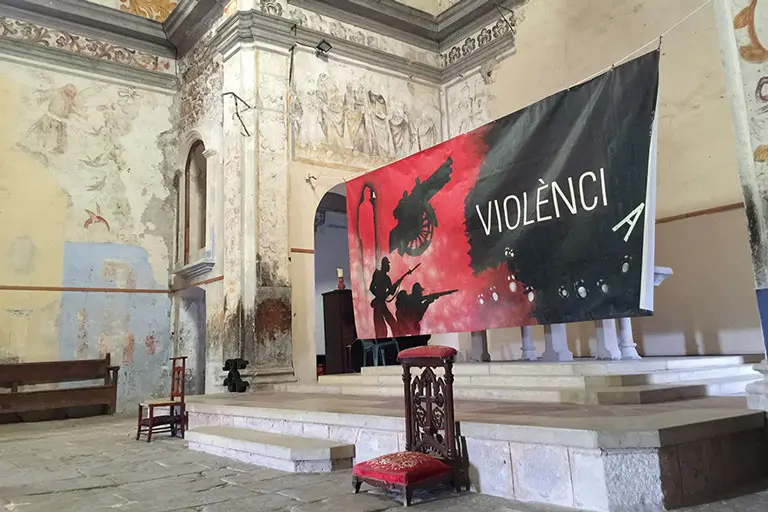
The Old Church
Much more than a church
A renaissance treasure
trapped in time...
The most emblematic religious building in Miravet is the Old Church. A unique Renaissance temple in Terres de l’Ebre, a work of the Order of the Hospital of St. John of Jerusalem.
The Església Vella is one of the three declared monuments along with the castle and the palace of Miravet. It is used for cultural uses, concerts, exhibitions and guided tours. Also for original weddings.
The complex, built between the sixteenth and seventeenth centuries to replace the old mosque, consists of the temple itself, the ajama headquarters and the Sanaqueta lookout square, the old cemetery.
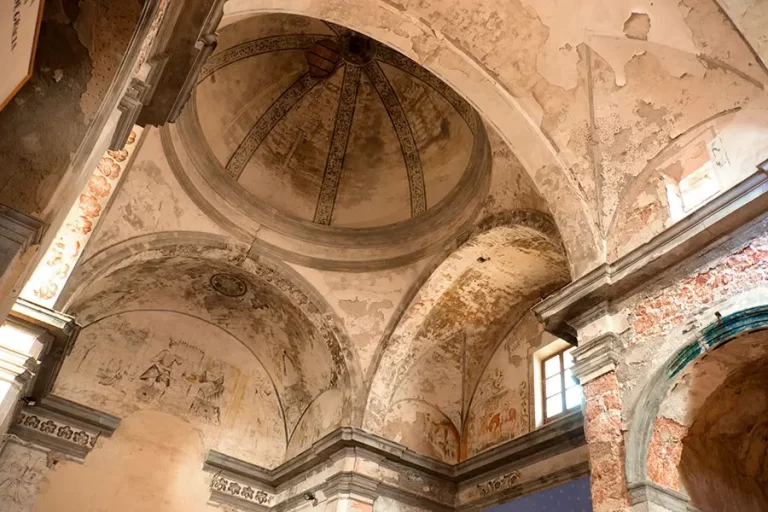
Interior of the temple
It is impressive, upon entering, to see the state of abandonment in which it was left because of the Spanish Civil War (1936-39).
His work is humble and simple a priori, but it hides excellent proportions and some original decorative elements, as well as the later mural paintings.
A building that speaks of the disasters of war and an example of the weight of history.
It is still surprising that, in the 21st century, there are monuments like this one forgotten by the institutions in a modern Europe.
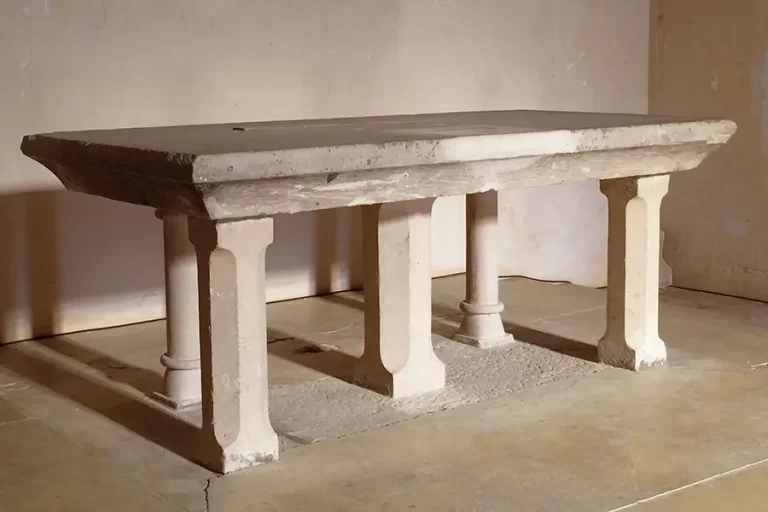
The Romanesque altar
In its interior it preserves a real treasure.
The most sacred key piece of the Templars: the now Romanesque church of the castle, which contained the relics brought by the knights from the Holy Land.
Also the holy water sink.
And the heraldic coat of arms of Guillem de Guimerà, ecclesiastical deputy who presided over the courts of Aragon and Catalonia in 1376 to define the territorial separation that is still maintained today. This is why Miravet was chosen for the celebration of the Statute Summit in 2004.

The Moorish aljama
Behind the church, in the small square, is the headquarters of the Moorish ajama. It was part of the mosque complex, facing Mecca, with the sahn or ablutions courtyard.
The aljama was where the board of the Jewish and Moorish community (from the Arabic ŷāma’aʻ meaning ‘town hall’) met.
It has a brick diaphragm arch and the interior cubic space has lost its cover, probably cupola.
Curiously, the Sanaqueta Square is called ‘sahn’, from the Hebrew ‘Samah Katah’ or school of God’s wisdom (a place of meeting, study and debate).
Visit the Old Church
A trip to the past just through the door
The guided visit to the Old Church is part of the Miravet Experience tour of the Cap de la Vila and the castle, including the Palau de Miravet with a wine tasting at the end.
Direct reservation of a visit at the following telephone numbers
The Renaissance temple
worthy of Brunelleschi
The building, in Renaissance style, was built between the XVI and XVII centuries by the Knights of the Order of the Hospital and consecrated to San Juan Bautista, its patron saint.
It is a temple with a cross plan and central nave with a semicircular vault, window openings, side chapels, central dome with shells in the transept and a rectangular altar with an oven vault.
The architectural ensemble enjoys a magnificent spatial and aesthetic harmony with geometric proportions based on the volumetric development of the cube x 4, achieving surprising acoustics.
The original interior decoration recalls the work of Brunelleschi and Vignola, with a great stylistic purity where white lime and gray plaster predominate, as can be seen in the original sgraffito of the dome.
A terrible story
an unjust expulsion
The mural paintings, of religious character, are later, from 1730, and correspond to the baroque period when, after the War of Succession, the temple was recovered (and the town, which suffered abandonment for seven years).
On the left wall of the transept there are two figures in black and white clothing. One carries the cross and the other the bible. They represent San Domingo de Guzmán and San Vicente Ferrer.
They are witnesses of a terrible and forgotten historical episode: the conversion to Christianity and subsequent expulsion of the Moors in 1611.
The Miravet aljama was one of the most respected in Terres de l’Ebre. The Moorish community was forced to convert to Christianity shortly after the expulsion of the Jews (in 1492). This mission was carried out throughout the Levant by the Dominican inquisitors with the corresponding ‘autos de fé’.
Already, in 1530, the people began a campaign to raise money to contribute to the construction of the church, as a sign of their conversion, contributing 3,000 silver ducats (a fortune), labor and accepting San Domingo as their patron saint. Part of this fortune was gathered by the potters’ guild.
A man called Masot, who worked on the work at the age of 18, saw it completed at the age of 38. He was one of the new Christians, converted by marrying a Christian girl from Tivissa (through a pact between families plus the contribution of a considerable dowry). But this did not save him from expulsion, carried out in 1610, when he was 63 years old. He, his family and 315 other residents of the village, elderly and children, were expelled on charges of belonging to the ‘Mohammedan sect’.
Our neighbor Masot had to live in exile in a country that was not his own, Algeria, leaving more than 30 generations buried in this land. His heirs still keep the key to the Miravet house.
The disasters of war
the Battle of the Ebro
The Spanish Civil War (1936-1939) marks the most tragic episode.
During the anticlerical revolts of 1936, the Renaissance altarpieces and images in the Sanaqueta square were burned. The Virgin of Grace, the Templar, a Romanesque carving from the time of the Templars, was thrown into the river.
The subsequent Battle of the Ebro further affected the condition of the building.
In the second counteroffensive the town was bombed by the German air force and a shell went through the dome without exploding inside.
It was temporarily recovered during the construction of the new church in the middle of the village. In 1962 it was deconsecrated and for years suffered the effects of abandonment and neglect that endangered the integrity of the building. The roofs, windows and doors, a good part of the interior walls and the mural paintings were damaged.
In the eighties a group of people was organized in favor of the recovery of the historical and cultural heritage of Miravet, since not only the Old Church was in danger, but also the castle and the whole old town. It was then that the roof and the clocher were restored, recovering the old wrought iron weathervane and a single bell.



